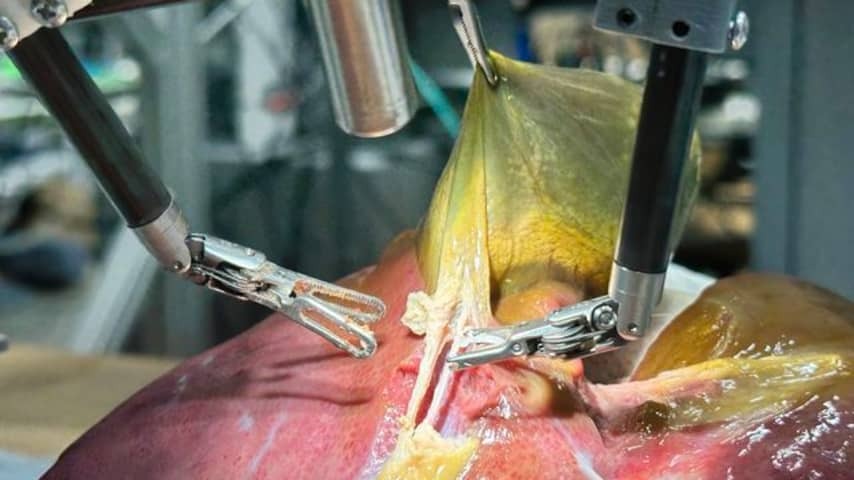
An operation robot has independently removed a gallbladder from a pig for the first time. This is considered an important step towards operations that may be performed entirely by robots in the future, without the help of a doctor.
The robot was developed by researchers at Johns Hopkins University in the United States. It was trained with video footage of previous gallbladder removals and received instructions from an experienced surgeon during practice operations.
After 34 guided operations, the robot managed to perform eight gallbladder removals independently and flawlessly. During these procedures, it corrected itself when, for example, it gripped incorrectly or grabbed multiple structures at once.
The operations were performed on gallbladders that had already been removed from the pig’s body, but with the gallbladder still attached to surrounding tissues. This allowed the robot to perform real surgical steps, but without circumstances such as blood loss or limited visibility that do occur in a living animal.
The gallbladder operation was deliberately chosen as a test case because it is very common worldwide. In the Netherlands alone, around nineteen thousand gallbladders are removed every year. In the US, that number is 700,000. Because a lot of video material is available of this type of procedure, the researchers say it is a suitable operation to train a robot on.
The researchers call the result a breakthrough. Until now, surgical robots have mainly been auxiliary systems that are controlled by people. Fully autonomous operations require a robot to be able to adapt to variations in anatomy and unexpected circumstances. This has now succeeded on a limited scale for the first time.